Building the SBS
Introduction
The system breakdown structure (SBS) is best built dynamically by creating and allocating components to requirements during the requirements analysis. The best place to allocate requirements to components is in the allocation tab of the requirements view.
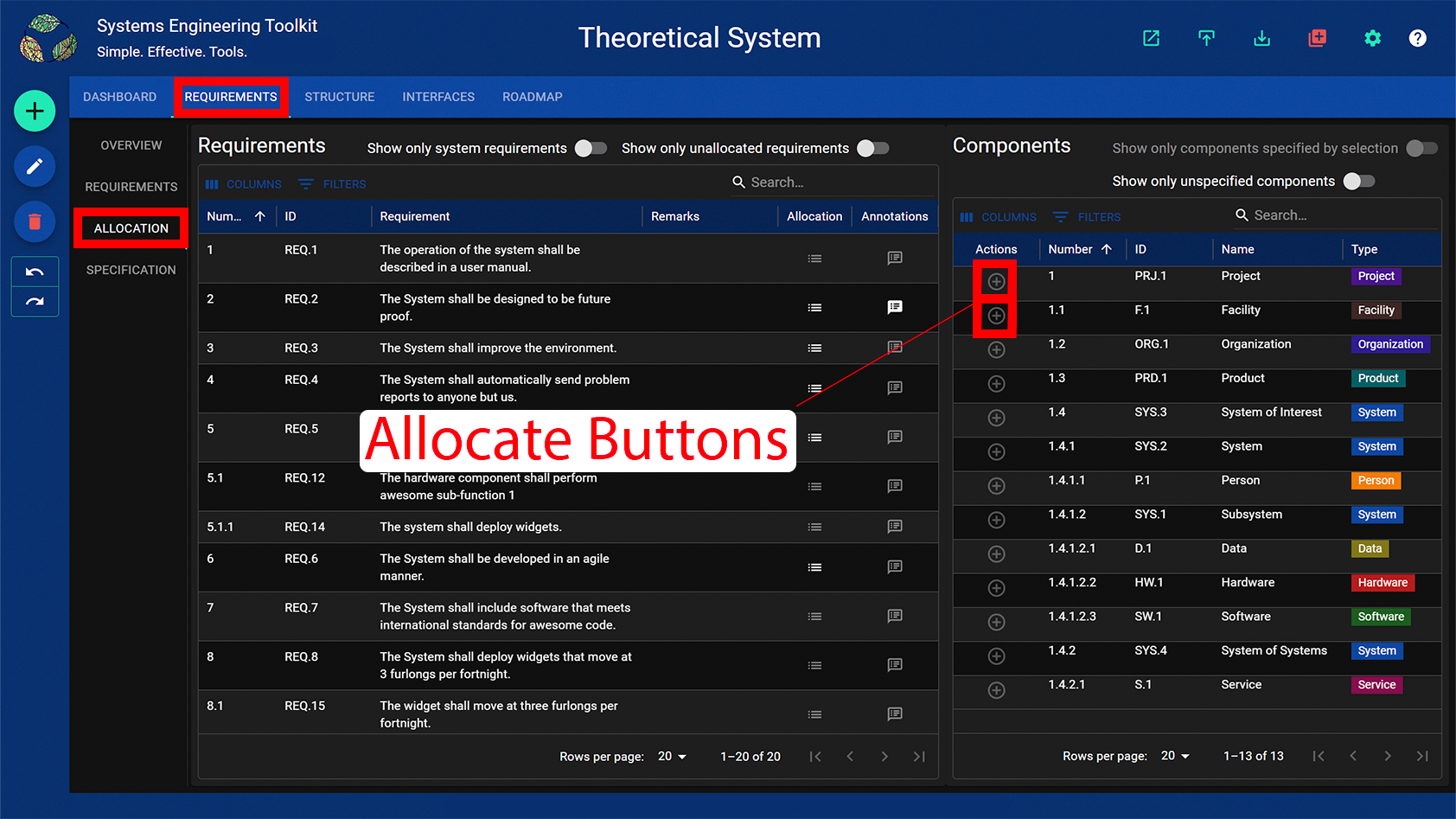
To allocate a component to a requirement: select the requirement in the left hand table and then press the allocate button (+) next to the desired component in the right hand table.
To deallocate a component from a requirement: select the requirement in the left hand table and then press the deallocate button (-) next to the desired component in the right hand table.
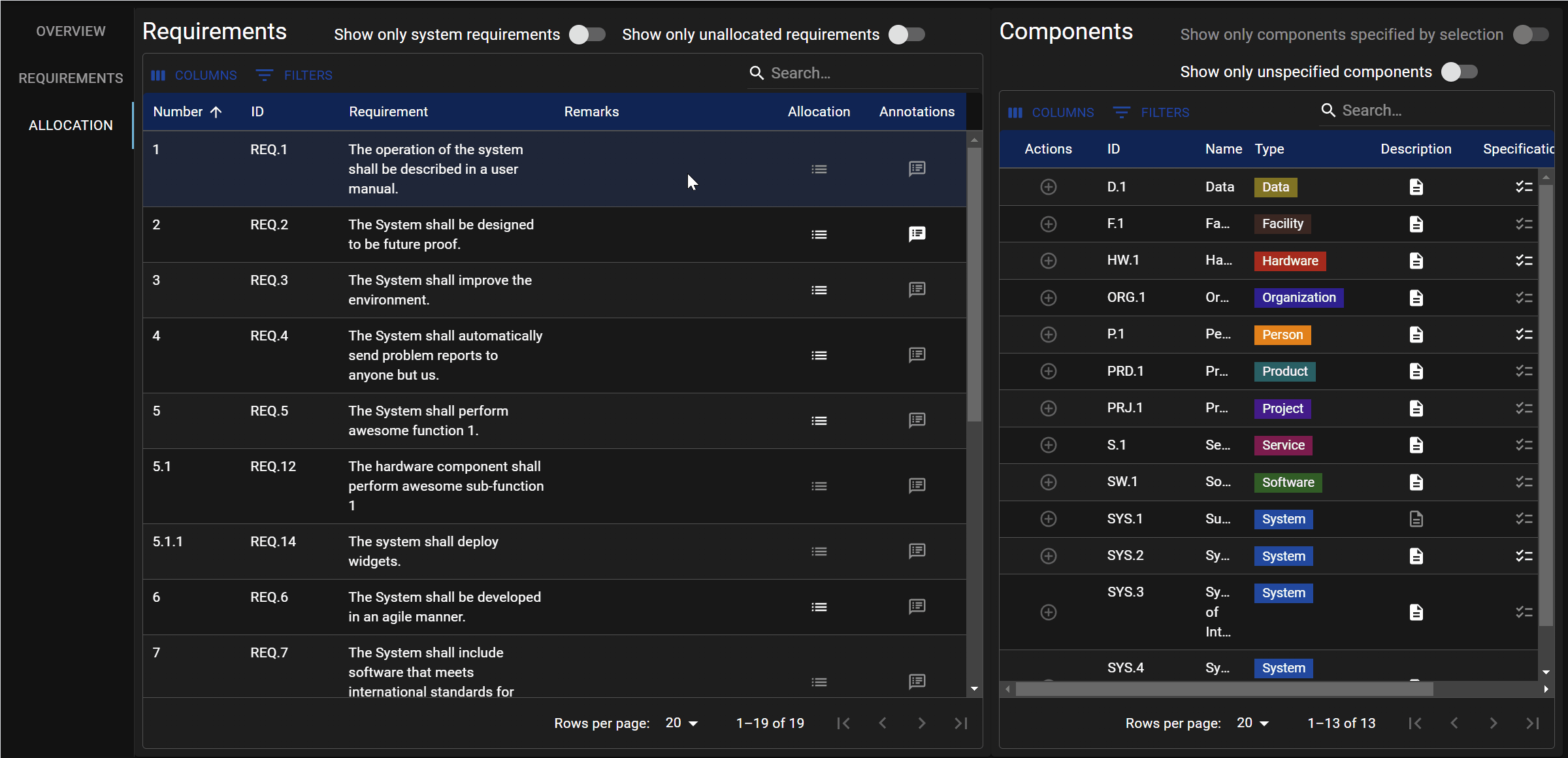
Requirements can also be allocated to components in the requirements tab of the requirements view.
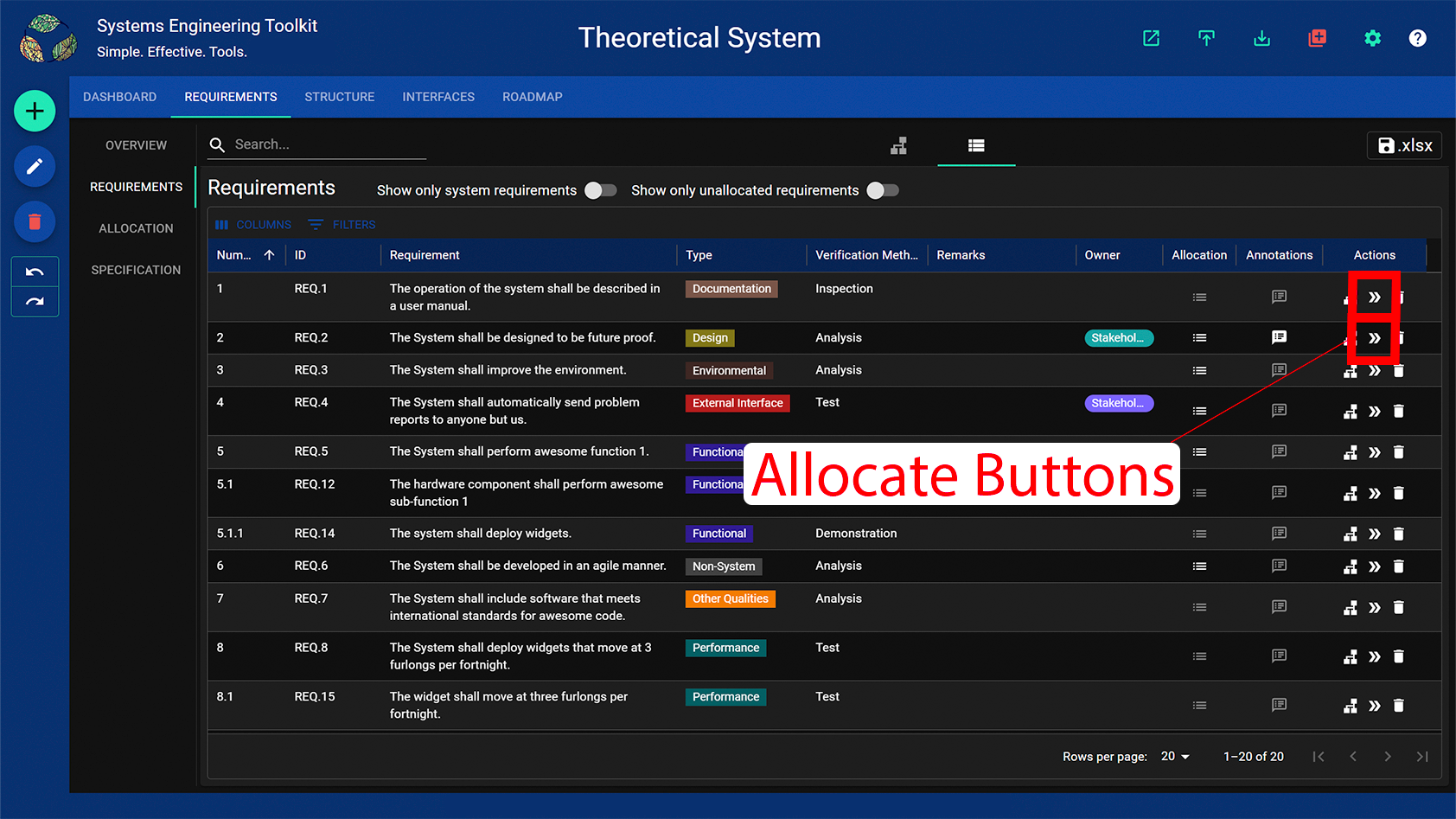
To allocate a component to a requirement: press the allocate button (») next to the requirement and select the desired component.
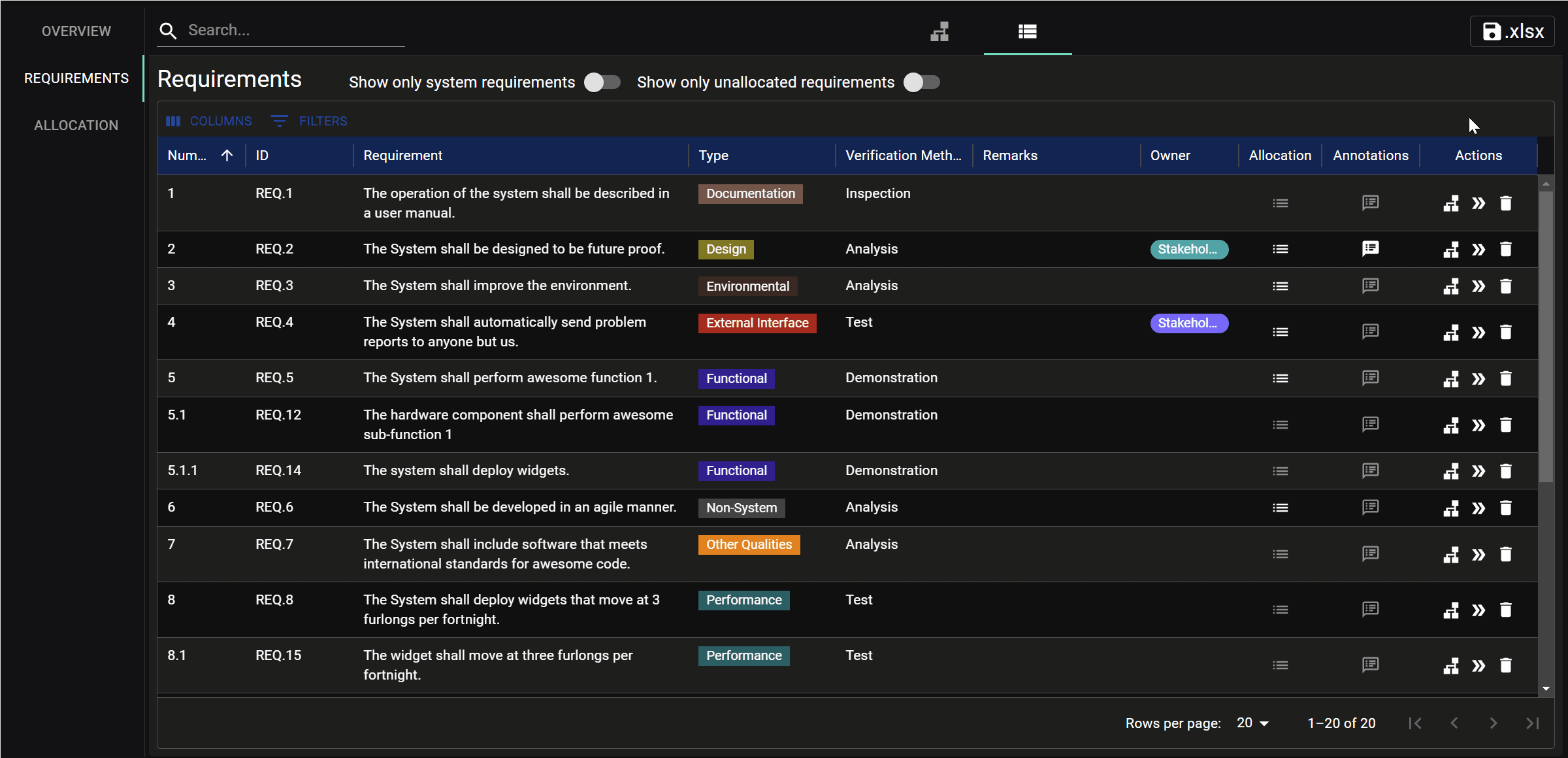
Both of these methods rely on the components already existing in the system structure. If a new component is needed then it needs to be created in the structure view first, before it can be allocated to the requirement. See Creating Components for how to do this.
Elements which have specifications are indicated by the presence of a solid list icon either in the lower right hand corner of the shape representing the element in diagrams or in the specification column of a table.
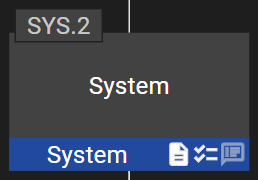
Specifications can be viewed by hovering over or tapping the solid list icon.

The most efficient way to build the SBS while analysing the requirements is to open the structure diagram in a separate browser tab or window next to the allocation view. If you have two monitors then having the requirements on one and the structure diagram on the other works perfectly. See Working With Multiple Browser Tabs And Windows for how to do this.

Checking progress
You can check your progress in the overview tab of the requirements view.
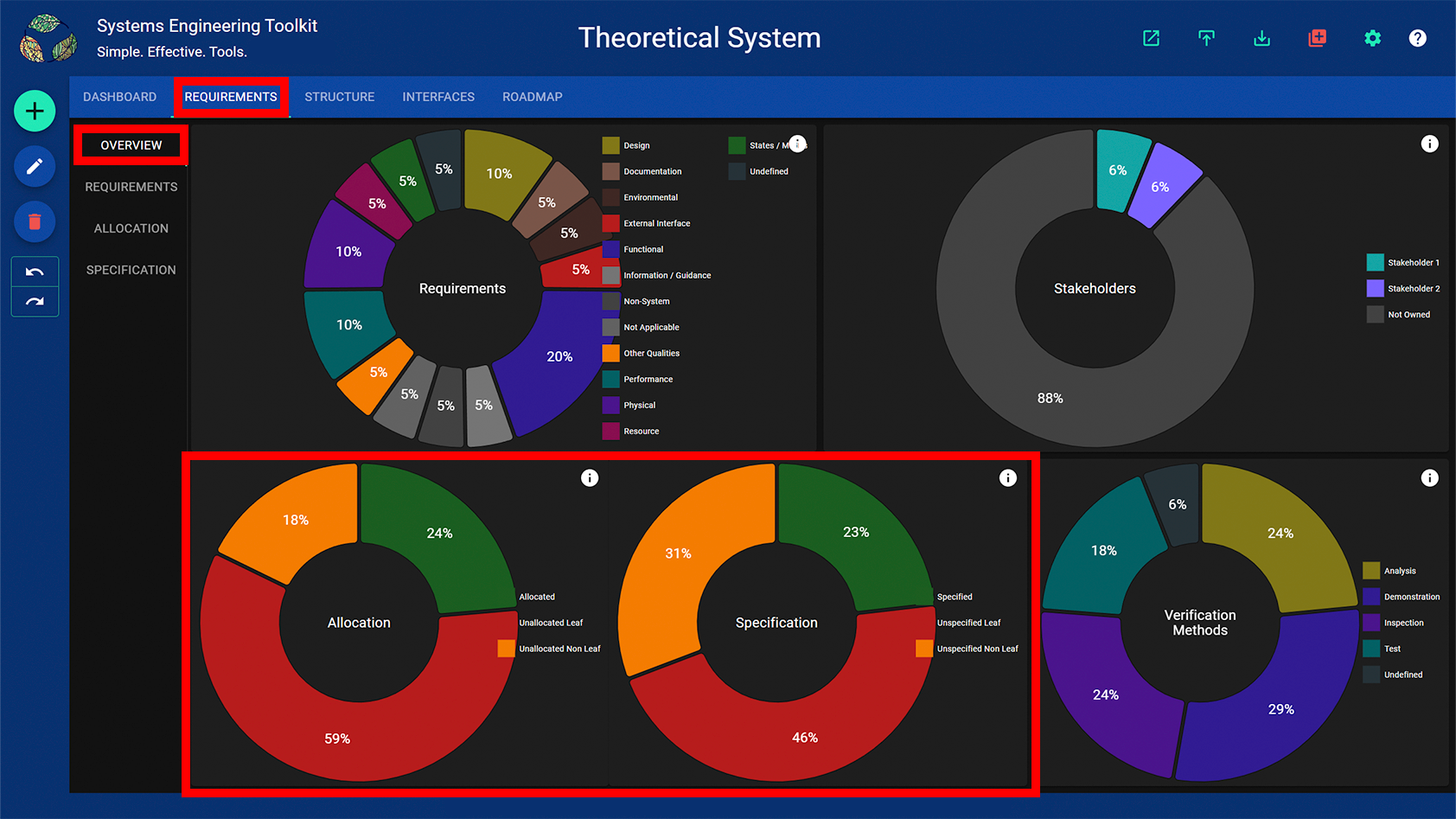
The allocation chart shows the number of system requirements that are allocated to components.
The components chart shows the number of components that are specified by at least one system requirement. The components chart distinguishes between leaf and non-leaf components. As long as all leaf level components are specified by at least one requirement, there are no unecessary components in the system.
Using filters to focus
There are a number of “show only” filters at the top of the tables in the requirements and allocation views. These can be used to focus on specific areas of interest, for example, unallocated requirements and/or unspecified components.
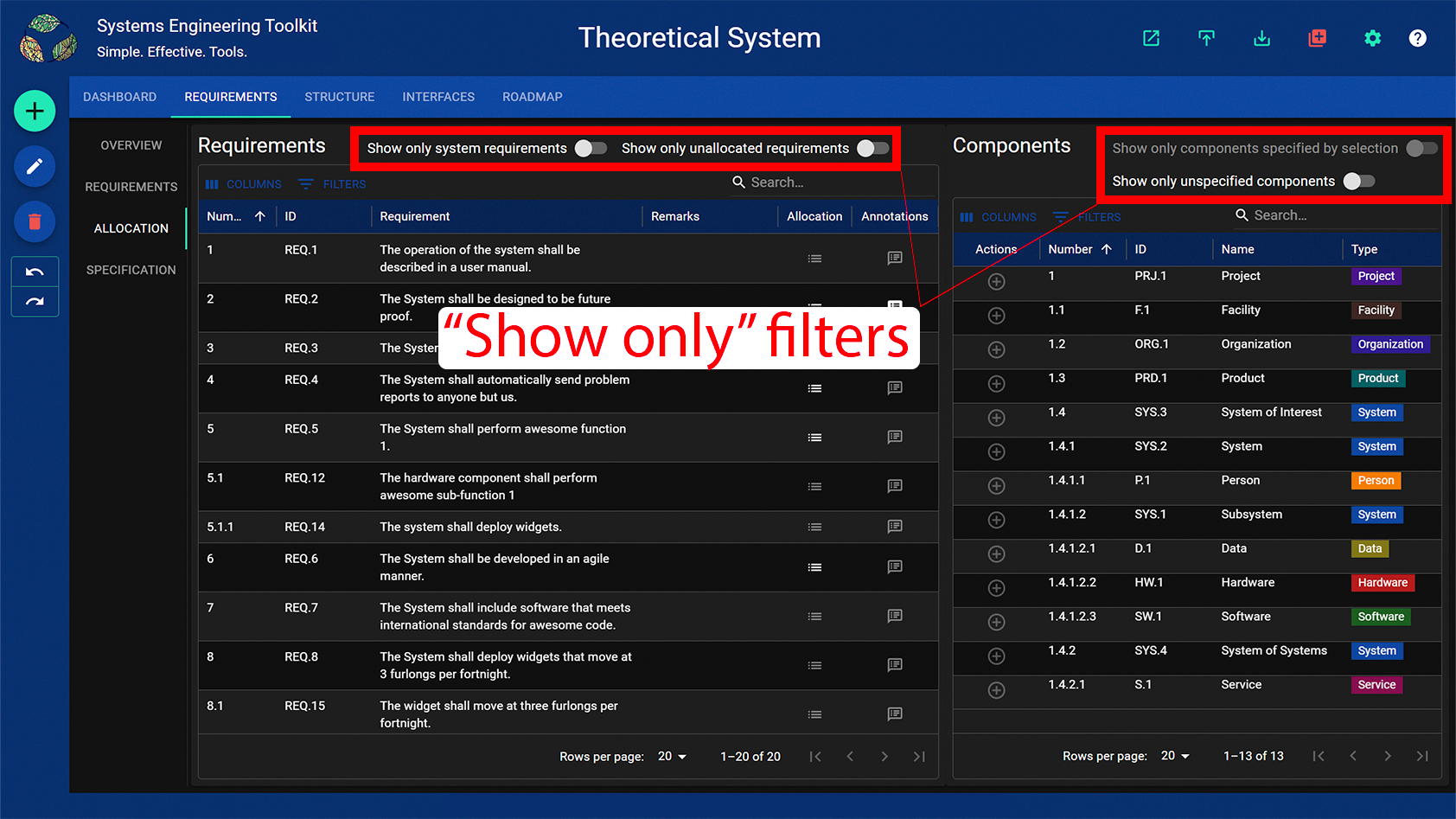
Additional filters can be set on individual columns using the table filter controls.
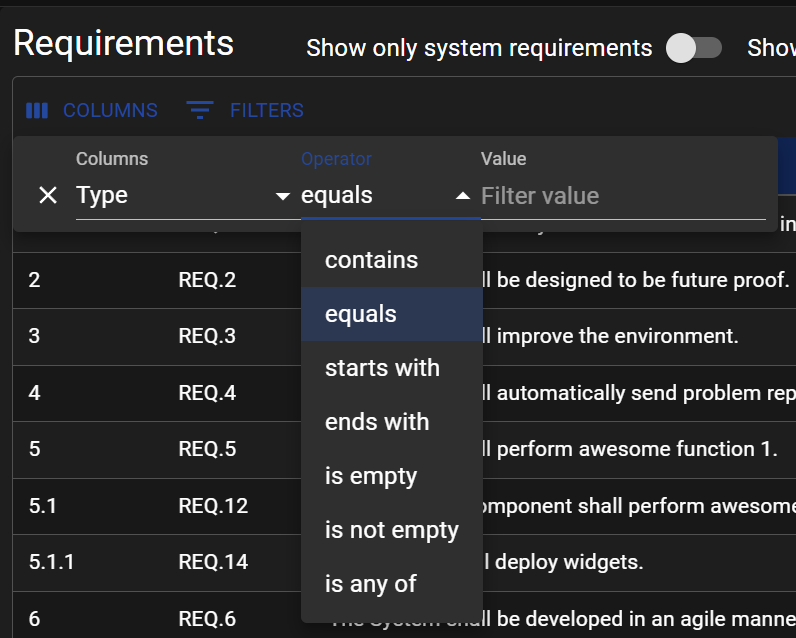
Searching for specifics
Search inputs can be used to search for specific text in the visible columns of that table. These search inputs are preserved when switching between view tabs but they are not duplicated across browser tabs or windows. This is conveniant because it means that you can have different model views showing different search results in multiple browser tabs and windows.
Search for multiple items at once by entering a semicolon separated list of terms.
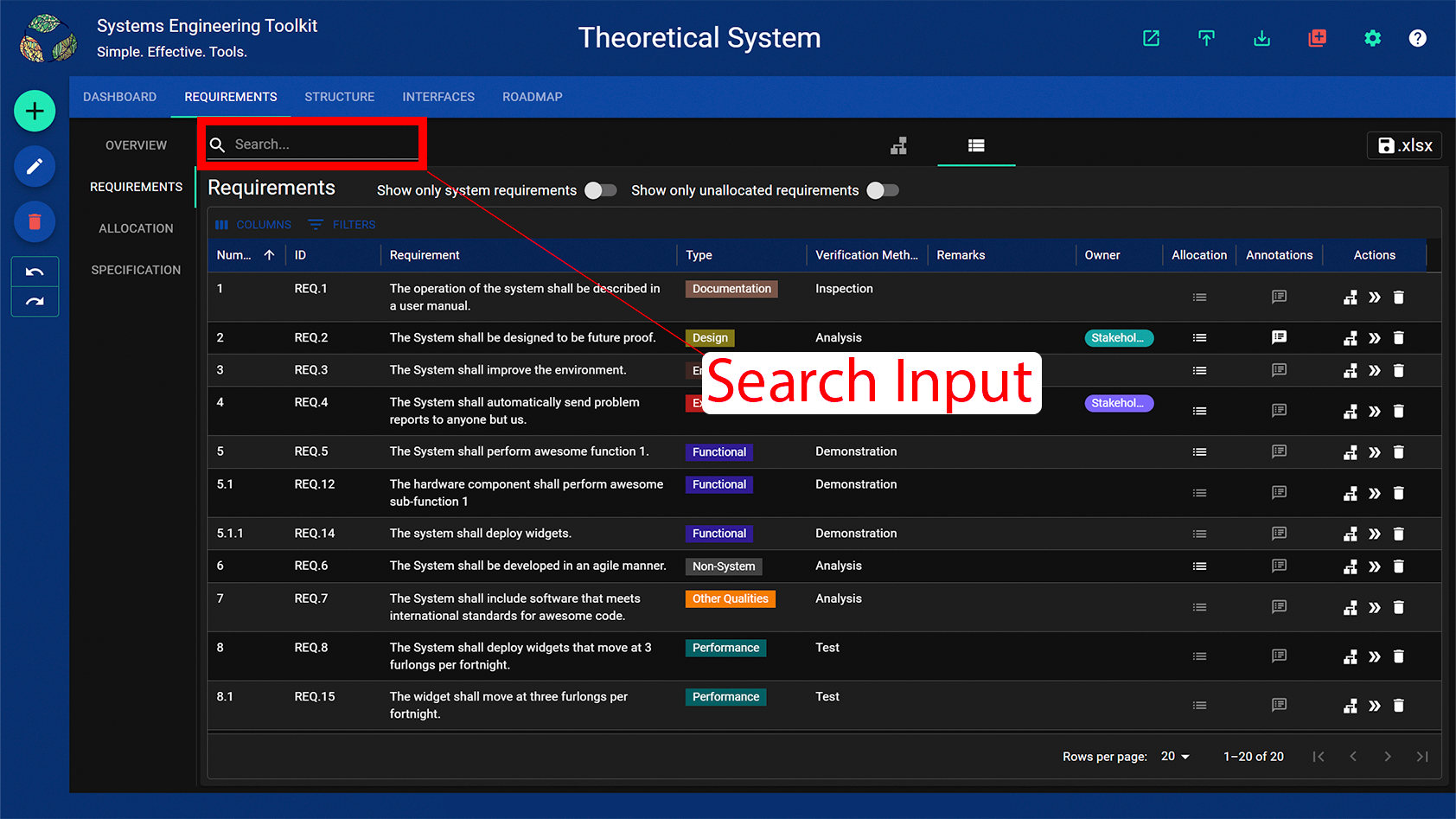
Search inputs are applied after filters. Therefore, if, for example, the “Show only unallocated requirements” filter has been appplied in the requirements table, then allocated requirements will not be included in the search results.
Showing and hiding table columns
Tables only have a limited amount of space available for showing a lot of information and, while large monitors are useful because they provide more virtual real estate for tables to fill, there are always limits. Therefore it is sometimes necessary to show and/or hide columns in tables, according to the needs of the task you are trying to accomplish.
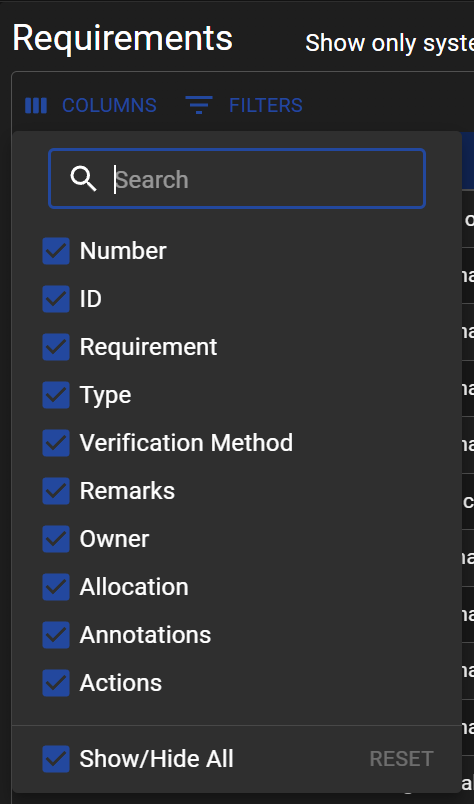
Doing things quickly with spreadsheets
Sometimes it will simply be faster to do things with spreadsheets. If, for example, you discover that you need to create twenty new functions and/or twenty new components, and they can all be named using a pattern,then a spreadhseet with a drag formula feature will be the most efficient way to achieve this.
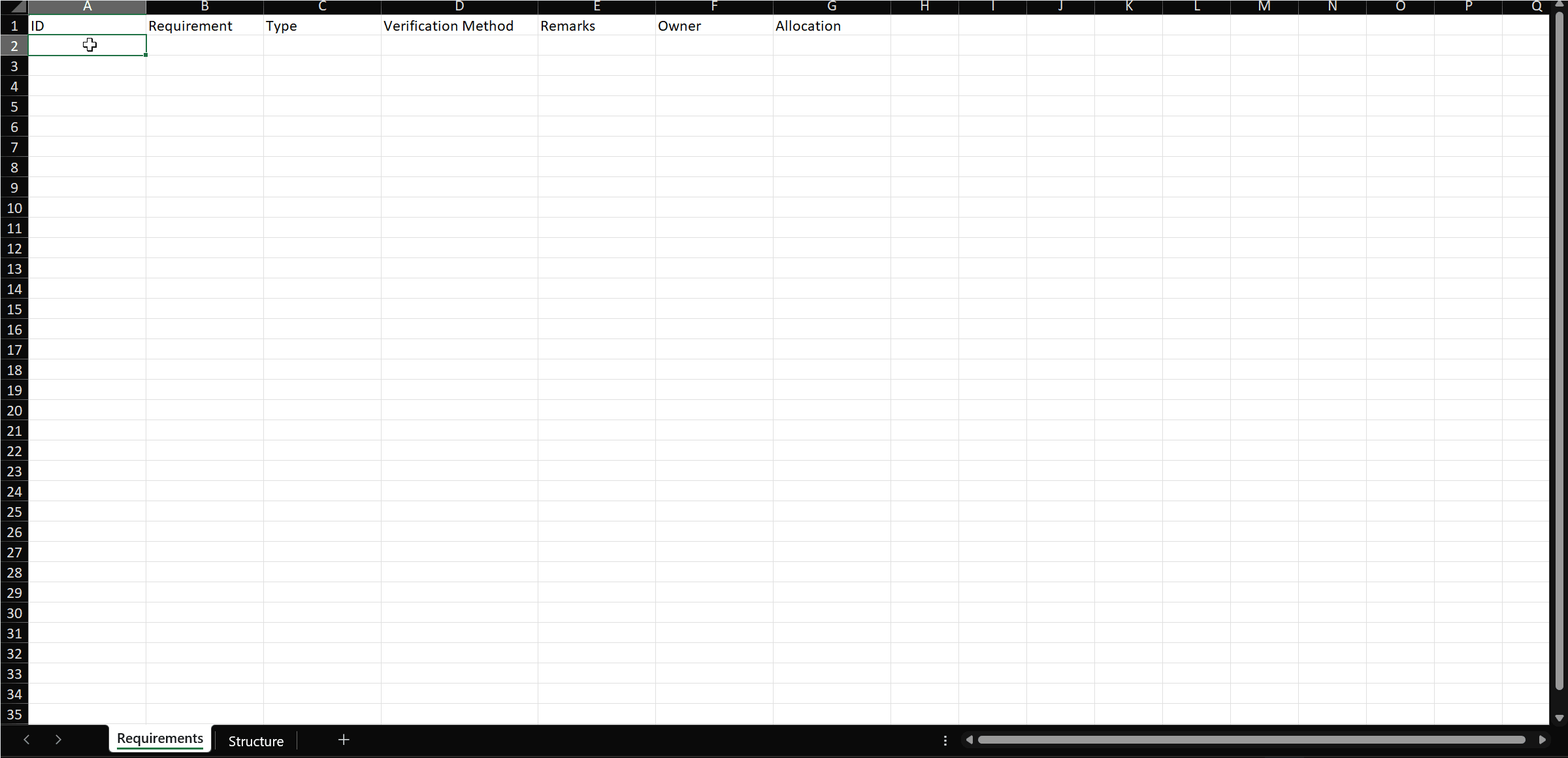
Unfortunately, it is not yet possible to import the allocation relationship between requirements and components from a spreadsheet. However, this feature is on the roadmap and will be available sometime in the future.
As another example, if you decide that a set of twenty requirements all need to have the same verification method, then it may be quicker to simply export the requirements to a spreadsheet, apply the changes by dragging a formula across the affected cells, and then reimport the updated values.
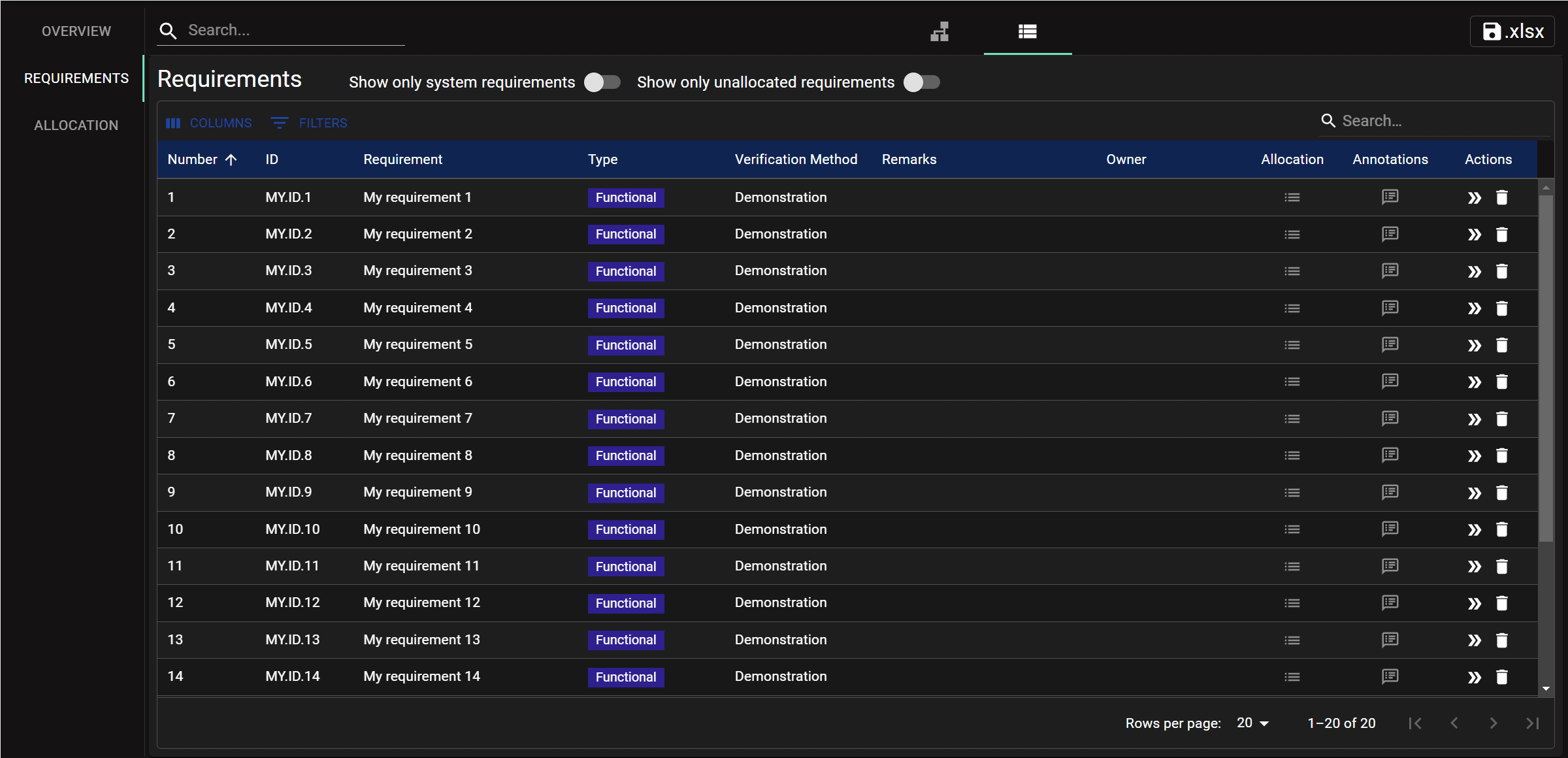
Remember: importing from a spreadsheet will update requirements and components that already exist in the model.